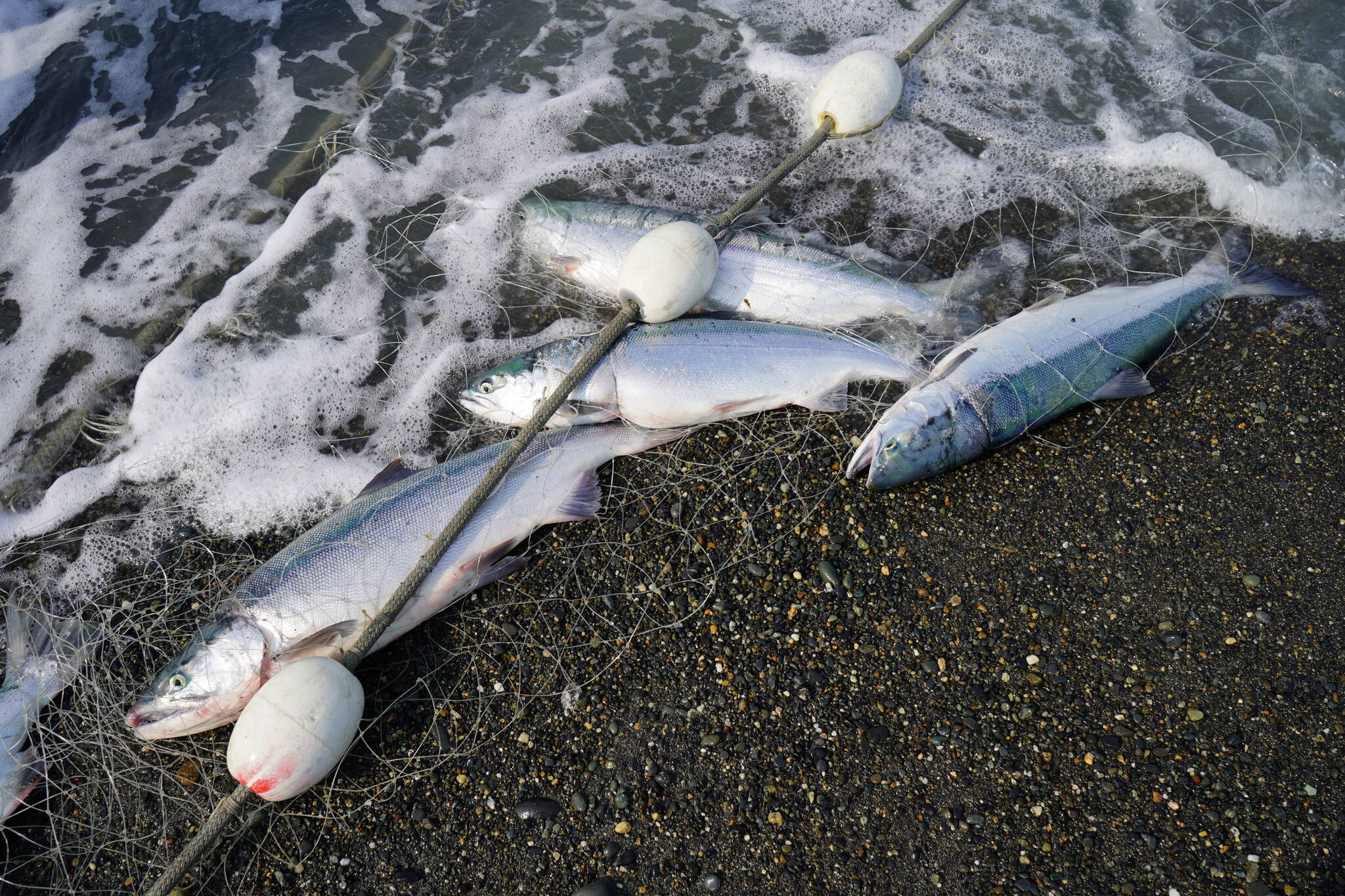A final draft spend plan for federal funds responding to a disaster determination for the 2021 and 2022 Upper Cook Inlet east side setnet fisheries was forwarded by the State Department of Fish and Game to the Pacific States Marine Fisheries Commission on Wednesday. The commission will distribute the funds once the grant is approved.
A public notice from the department says that the National Marine Fisheries Service in June allocated $11,484,675 to address losses from the 2021 and 2022 fisheries. The U.S. Secretary of Commerce made the disaster determination in April, responding to an October request from Gov. Mike Dunleavy.
The ESSN has faced significant restrictions in recent years to protect king salmon. Those restrictions culminated in a complete season closure announced months before their scheduled start in 2023. This year, the fishery is again entirely closed, but some openings have been allowed with dipnets — which received approval by the State Board of Fisheries and emergency approval by the Commercial Fisheries Entry Commission.
Since July, the department has completed three revisions of a draft spend plan responding to a total of 73 written comments. The draft plan says that 62% of the money, around $7 million, will be dispersed to harvesters. Around $3 million will go to processors, $1 million to research, $300,000 to communities and $11,000 for program support.
Funding for harvesters is separated into two pools. The larger share, 90%, will go to permit holders who have a valid and registered S04H permit with the Commercial Fisheries Entry Commission and who purchased a buoy sticker for 2021 or 2022. The plan says there are 422 eligible permits in 2021 and 402 eligible permits in 2022.
Crew will receive the remaining 10%. To receive payment a crew member must have held an annual crew license or a CFEC permit for any fishery. They must provide information to show they participated as crew in either the 2021 or 2022 seasons, and someone cannot qualify as both permit holder and crew in the same year.
Communities that “may be eligible” for funds are Homer, Kenai, Soldotna and the Kenai Peninsula Borough.
Research “suggested” in the plan include increasing understanding of “specific mechanisms” that drive productivity of Kenai River late-run king salmon, improvements to forecasting of king salmon, exploration of the impacts of large sockeye salmon escapements and evaluation of “alternative gear types aimed at reducing harvest of weak stocks.”
The department writes that the plan has been forwarded to the commission, “once the grant is approved, PSMFC can begin the fund distribution process.”
A draft plan was previously submitted to the commission for the 2018 ESSN and 2020 Upper Cook Inlet salmon fisheries in September 2023. Funds have not yet been distributed for either of those disasters.
The Alaska Delegation — Sens. Lisa Murkowski and Dan Sullivan and Rep. Mary Peltola — announced last month that $277 million had been allocated by the U.S. Department of Commerce to address delayed funding for fishery disasters in Alaska, including the local 2018 and 2020 disasters, but the commission says that funding still has yet to be received.
The offices of all three members of the delegation did not respond to questions about that announcement on Sept. 20.
A third local disaster determination was also recognized for the 2023 Upper Cook Inlet east side setnet salmon fishery in June. The National Marine Fisheries Service hasn’t yet allocated funds for that disaster.
The draft plans can be found at either adfg.alaska.gov or in Alaska’s Online Public Notices.
Reach reporter Jake Dye at jacob.dye@peninsulaclarion.com.

